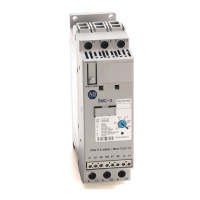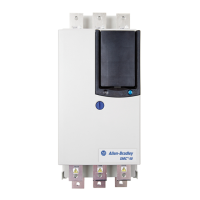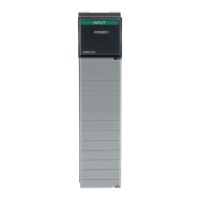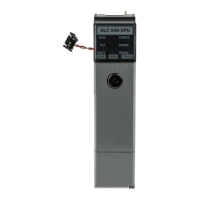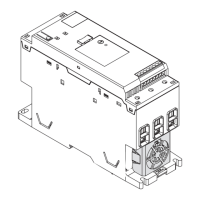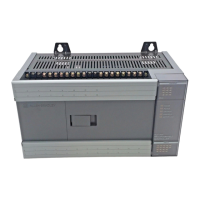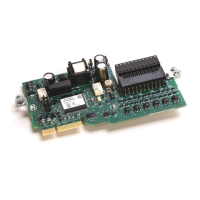Overview of Structured Text Programming
Rockwell Automation Publication MOTION-RM002H-EN-P-February 2018 643
The table shows some examples.
Use this format Example
For this situation Use
BOOLtag If photoeye is a BOOL tag and your specification says: "If photoeye_1 is on
then..."
IF photoeye THEN...
NOT BOOLtag If photoeye is a BOOL tag and your specification says: "If photoeye is off
then..."
IF NOT photoeye THEN...
expression1 & expression2 If photoeye is a BOOL tag, temp is a DINT tag, and your specification says: "If
photoeye is on and temp is less than 100 then..."
IF photoeye & (temp<100) THEN...
expression1 OR expression2 If photoeye is a BOOL tag, temp is a DINT tag, and your specification says: "If
photoeye is on or temp is less than 100 then...".
IF photoeye OR (temp<100) THEN...
expression1 XOR expression2 If photoeye1 and photoeye2 are BOOL tags and your specification says: "If:
photoeye1 is on while photoeye2 is off or
photoeye1 is off while photoeye2 is on
then..."
IF photoeye1 XOR photoeye2 THEN...
BOOLtag := expression1 &
expression2
If photoeye1 and photoeye2 are BOOL tags, open is a BOOL tag, and your
specification says: "If photoeye1 and photoeye2 are both on, set open to true"
open := photoeye1 & photoeye2;
See also
Structured Text Components: Expressions on page 638
Bitwise operators manipulate the bits within a value based on two values.
For Use this operator Optimal data type
bitwise AND &, AND DINT
bitwise OR OR DINT
bitwise exclusive OR XOR DINT
bitwise complement NOT DINT
This is an example.
Use this format Example
For this situation You'd write
value1 operator value2 If input1, input2, and result1 are DINT tags and your specification says:
"Calculate the bitwise result of input1 and input2. Store the result in
result1."
result1 := input1 AND input2;
See also
Structured Text Components: Expressions on page
638

